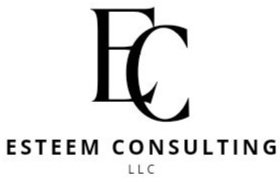Understanding Credentialing: Why It Matters for Healthcare Providers
In the dynamic world of healthcare, ensuring patient safety and quality of care is paramount. One of the critical processes that underpin these goals is credentialing. Whether you're a healthcare facility, a group practice, or an independent provider, understanding credentialing is essential to building a reputable and successful practice.
What is Credentialing?
Credentialing is the process of verifying a healthcare provider's qualifications, such as their education, training, experience, and licensure. This thorough vetting process ensures that providers meet the necessary standards to deliver safe and effective care. Credentialing is typically performed by hospitals, healthcare organizations, and insurance companies before a provider is allowed to practice or bill for services.
Why is Credentialing Important?
1. Patient Safety: Credentialing directly affects the quality of care that patients receive. By ensuring that only qualified providers deliver care, facilities can minimize the risk of errors and improve patient outcomes.
2. Regulatory Compliance: Healthcare providers must adhere to strict regulatory standards set by state licensing boards, accreditation organizations, and insurance payers. Credentialing ensures compliance with these regulations, helping to avoid penalties or loss of licensure.
3. Enhanced Reputation: A robust credentialing process builds trust and confidence among patients, stakeholders, and peers. It reflects a commitment to maintaining high standards and can enhance the overall reputation of the practice or facility.
4. Risk Management: A thorough credentialing process can also reduce legal risks. By documenting a provider's qualifications and ensuring ongoing compliance, facilities can mitigate potential malpractice claims and other legal challenges.
The Credentialing Process: What to Expect
The credentialing process can be extensive, often involving several key steps:
1. Application Submission: The provider submits an application that includes detailed information about their education, training, work history, and references.
2. Primary Source Verification: The credentialing team verifies the information provided through primary sources, such as educational institutions, training programs, and licensing boards.
3. Background Checks: Comprehensive background checks are conducted, including malpractice history, disciplinary actions, and criminal background checks.
4. Review and Approval: Following verification, the application is reviewed by a credentialing committee or board. They assess the information and decide whether to grant or deny privileges to the provider.
5. Ongoing Monitoring: Credentialing is not a one-time event. Ongoing monitoring is essential to ensure that providers maintain their credentials, including tracking license renewals and discipline actions.
The Role of Credentialing in Provider Enrollment
Credentialing is a crucial part of the provider enrollment process with payers, which allows healthcare providers to bill for services. Without proper credentialing, providers may face delays in enrollment, denied claims, and loss of reimbursement. Ensuring timely and accurate credentialing can save significant time and resources.
Conclusion
Credentialing is more than just a bureaucratic necessity; it’s a vital component of healthcare that ensures patient safety, compliance, and quality care. For healthcare providers and organizations looking to streamline their credentialing and enrollment processes, partnering with a consulting firm specializing in these services can be invaluable. At Esteem Consulting, we understand the intricacies of credentialing and can navigate the complexities for you.
Ready to get started with your credentialing process? Contact us today
